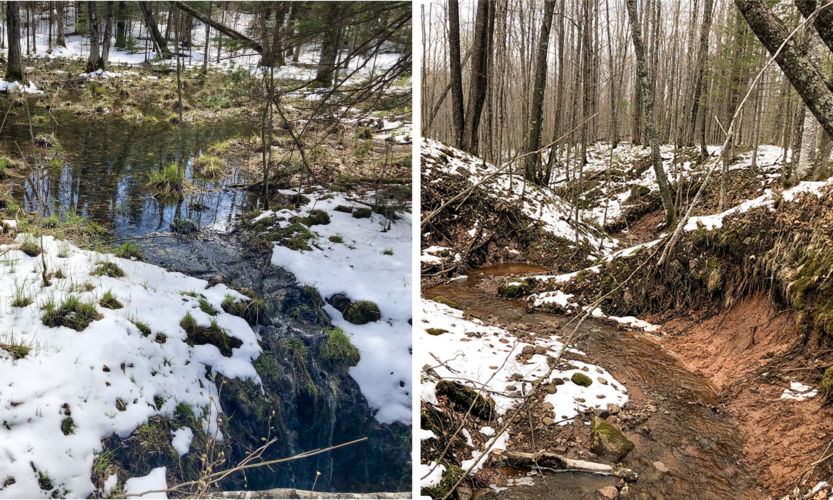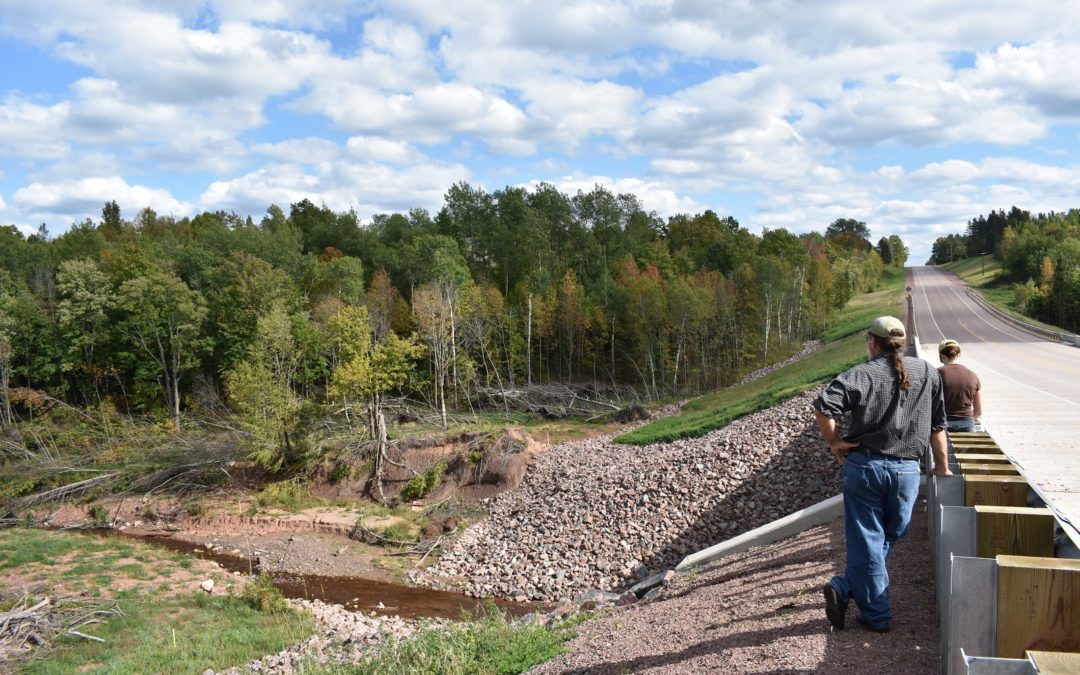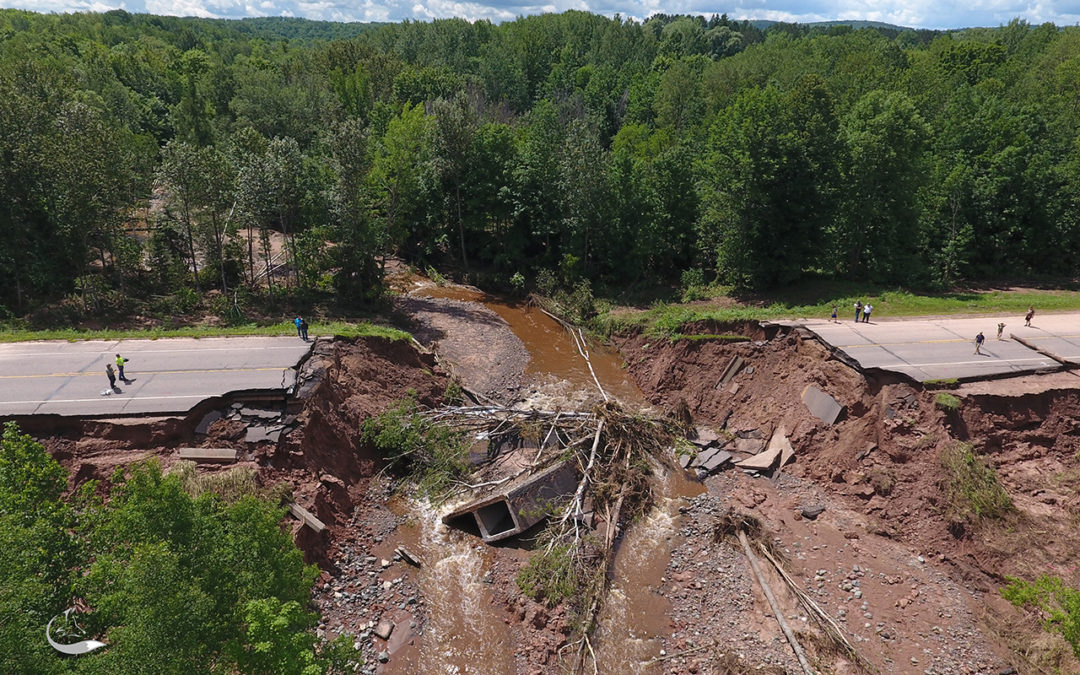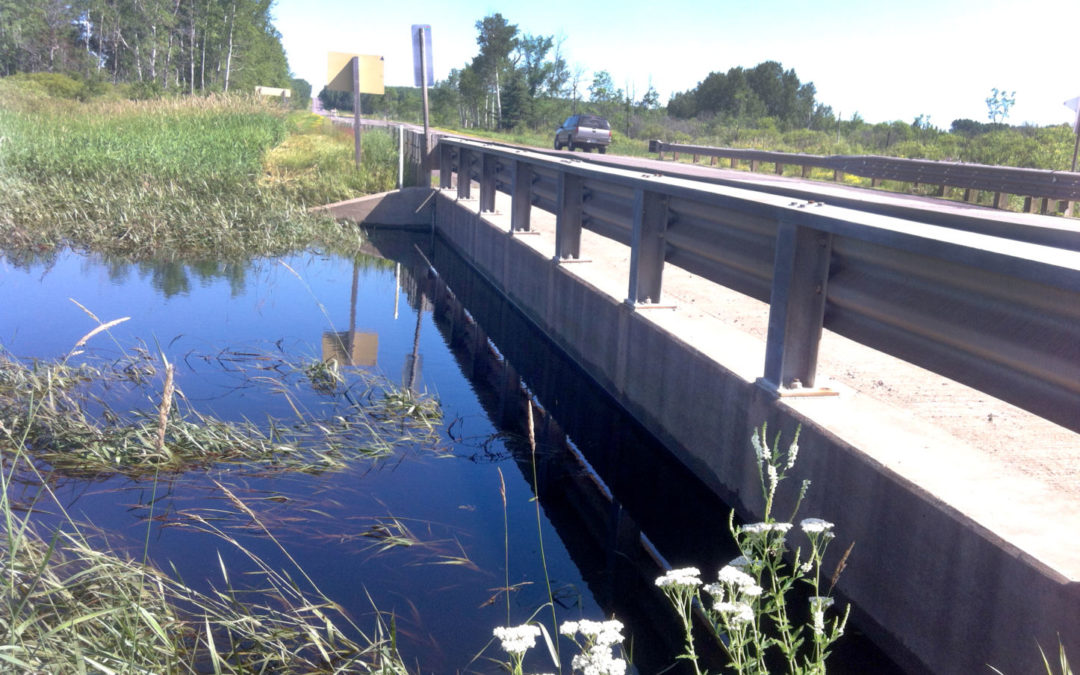Pictured: Examples of how gully erosion can drain an ephemeral pond (left—drainage flow evident where snow is melted in foreground) and degraded stream channels can increase flow and erosion (right). The demonstration projects proposed in this bill will showcase how these and other degraded conditions can be repaired.
Good news! A bill (LRB 1750) to provide funding to design and build 2-3 natural infrastructure restoration projects in Ashland County is now circulating for co-sponsorship.
WWA strongly supports this proposal because it will help natural resource managers, hazard planners, and road crews understand how restoration of upper watershed wetlands, streams, and floodplains can help reduce flooding and protect vulnerable infrastructure.
We need your help to encourage enactment of this bill!
LRB 1750 has an impressive list of bi-partisan co-authors, including Representatives Jim Steineke, Beth Meyers, and John Nygren, and Senators Jerry Petrowski and Janet Bewley. If you live in their districts, please call or write to thank them for their leadership as co-authors of LRB 1750.
If you live in a different district, please call or email your state Senator and Representative and ask them to add their name as a co-sponsor and to support enactment of this bill.
Contact information for your legislators can be found here.
When speaking with your legislator, key points to emphasize include:
- Wisconsin communities need more tools, including wetlands, to help reduce flood risks and damages.
- Healthy wetlands and floodplains help store and slowly release rain and snowmelt, but around the state degraded hydrologic conditions have greatly reduced wetlands’ natural ability to store floodwaters. This increases impacts to local roads, culverts, and bridges, and disrupts travel. Fortunately, these degraded conditions can be repaired.
- The degraded hydrologic conditions this bill will help address are most obvious in the steep landscapes of the Lake Superior Basin and the Driftless Area, but we see similar phenomena (loss of wetland/floodplain storage) everywhere we have flooding.
- The proposed demonstration projects will help test and measure natural flood management strategies, and provide a place for teaching resource and hazard managers about the costs and flood risk reduction benefits of wetland, stream, and floodplain restoration practices.
- The results of the projects that will be funded by this bill will be used as templates and case studies to show how similar projects can be used to address flooding around the state.
Please call or write your elected officials and remind them that the deadline for them to sign-on as co-sponsors is noon on May 22nd. You can find their contact information here.
Additional background for you and/or your legislators includes:
- A copy of the co-sponsorship memo and draft bill.
- A summary of the Wisconsin Wetlands Association study that helped identify the need for natural flood reduction demonstration projects.
- A new WWA video explaining How Wetlands Manage Water across the watershed.
Update: As of May 21, the following Representatives have signed as co-authors: Jimmy Anderson, Jonathon Brostoff, Jodi Emerson, Amy Loudenbeck, Greta Neubauer, Nick Milroy, Tod Ohnstad, Romaine Quinn, Tim Ramthun, Mark Spreitzer, Ken Skowronski, Ron Tusler, and Nancy Vander Meer.
Related Content
How can wetlands help communities be resilient to severe storms?
Making a case for wetlands




